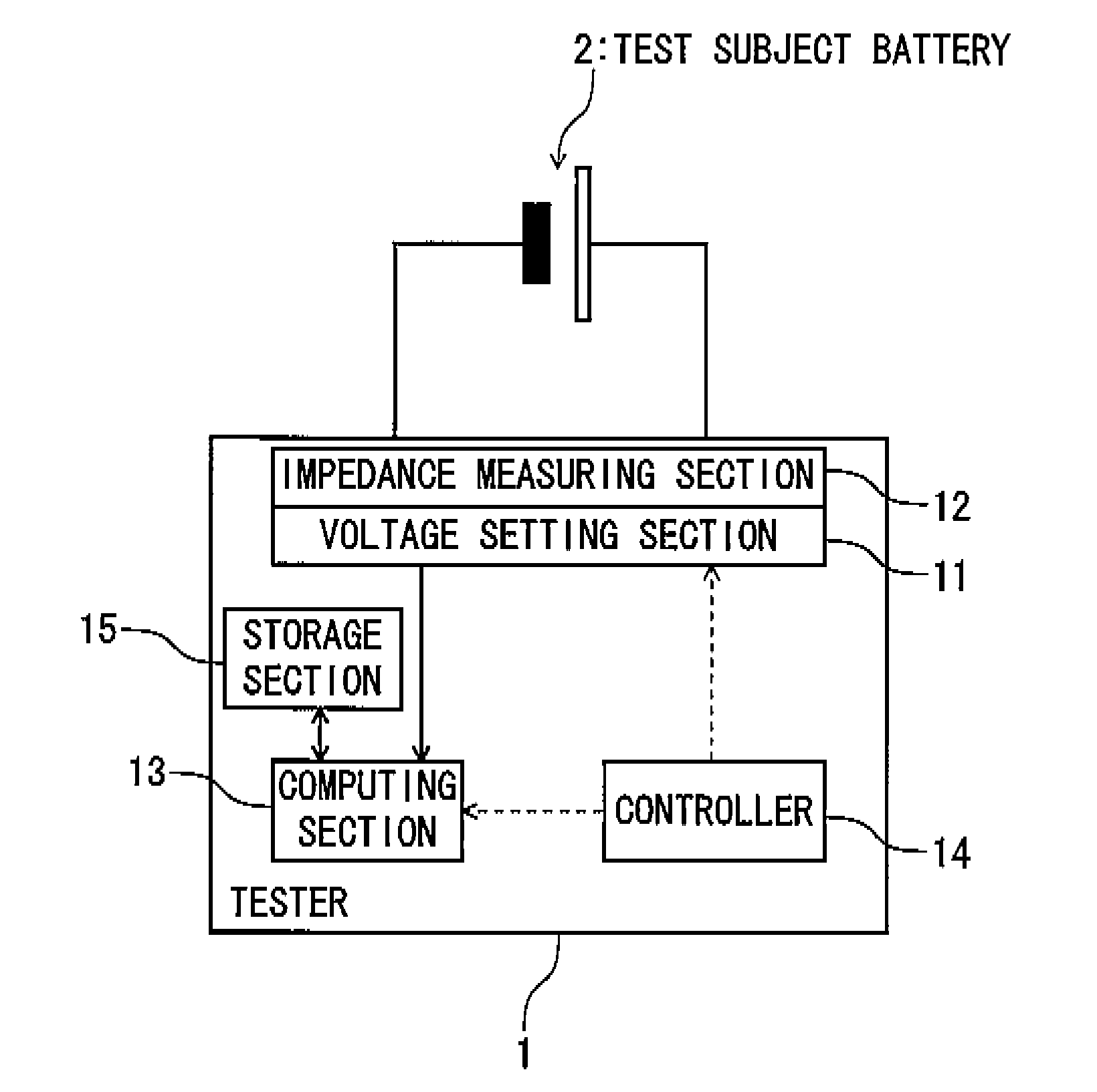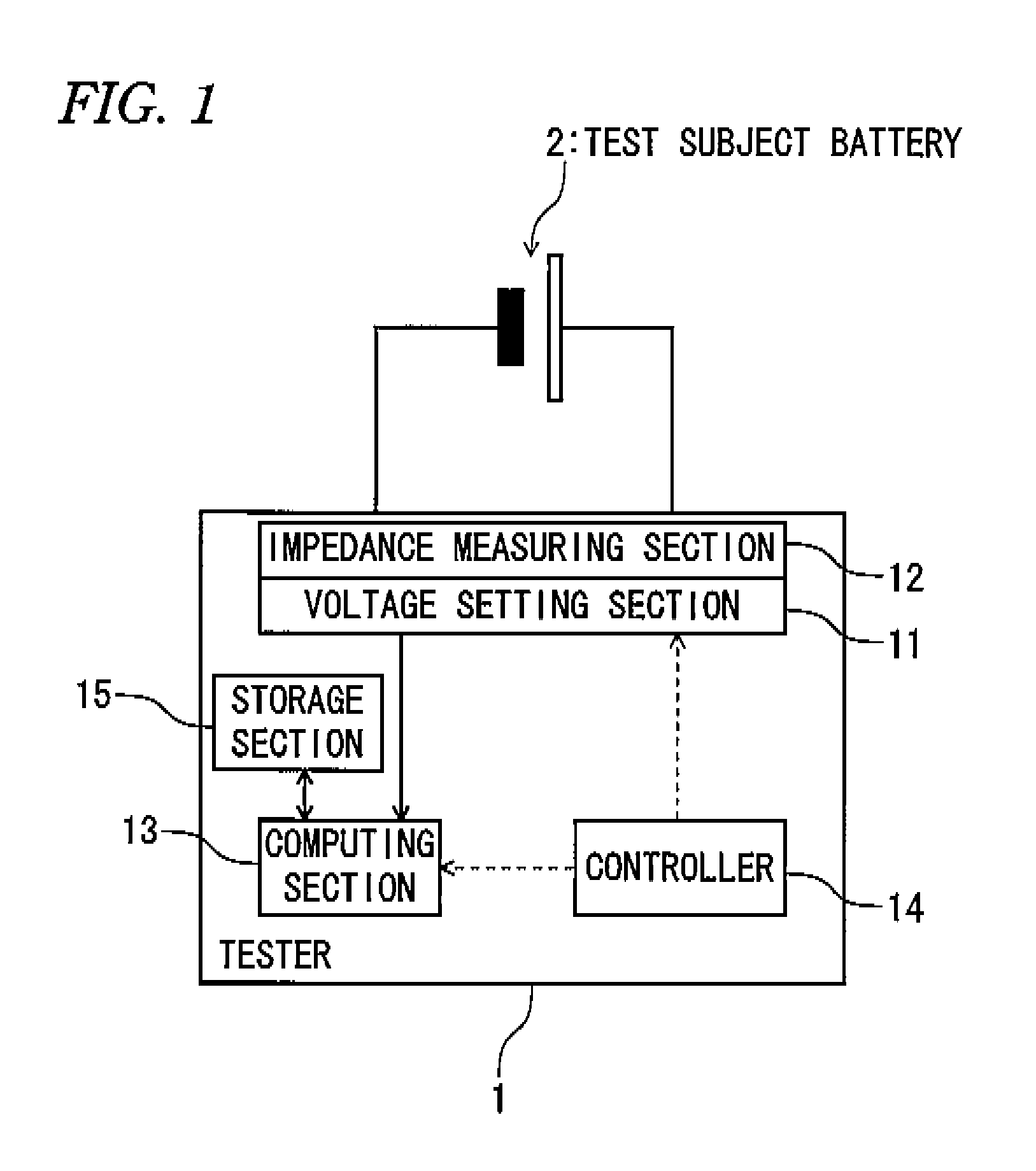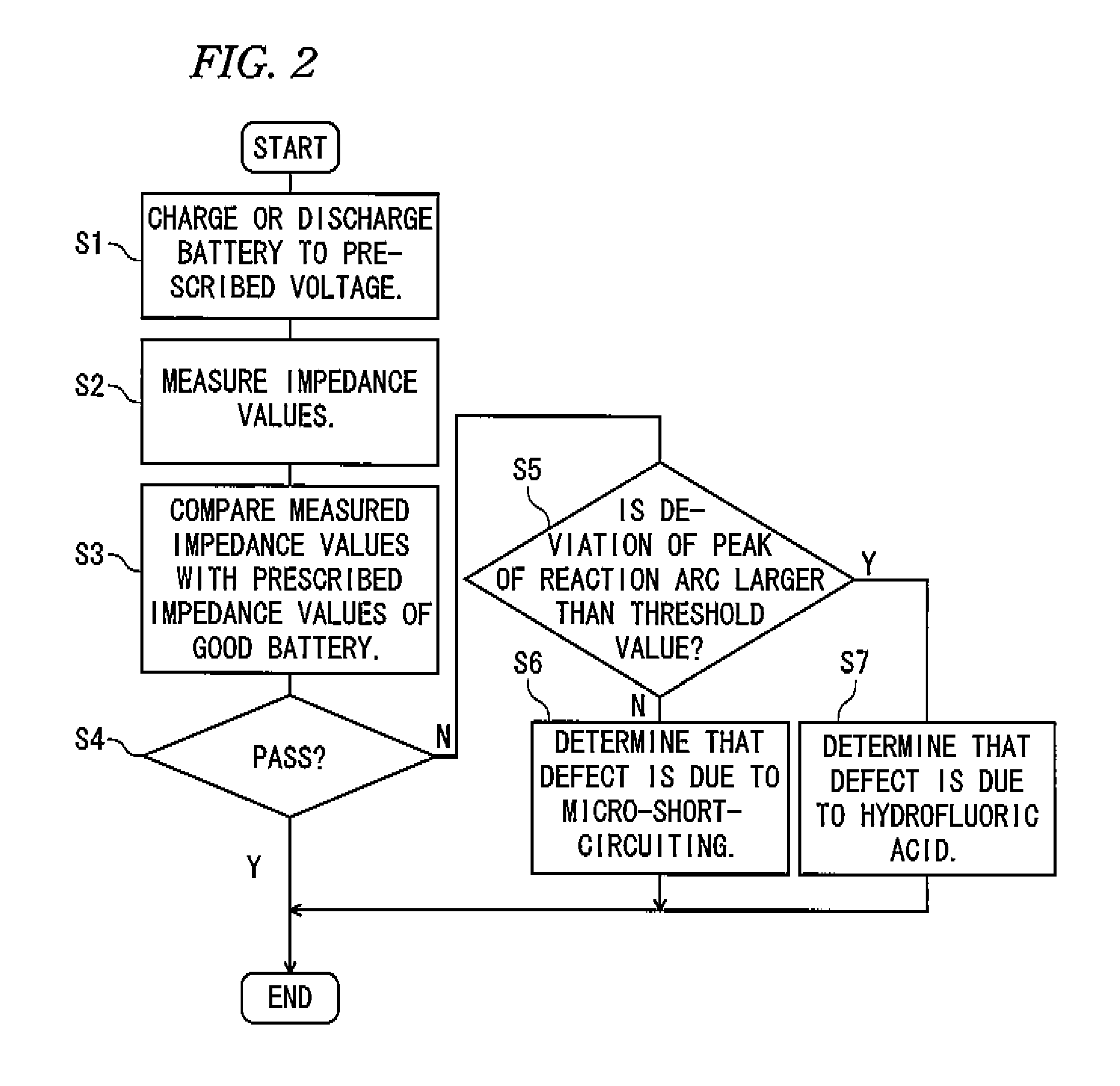Secondary battery tester, secondary battery testing method, and manufacturing method of secondary battery
- Summary
- Abstract
- Description
- Claims
- Application Information
AI Technical Summary
Benefits of technology
Problems solved by technology
Method used
Image
Examples
Embodiment Construction
[0027]A secondary battery tester according to an embodiment of the present invention will be now described with reference to the accompany drawings.
[0028]FIG. 1 is a block diagram showing the configuration of a tester according to the embodiment.
[0029]As shown in FIG. 1, the tester 1 according to the embodiment is equipped with a voltage setting section 11 for setting a voltage of a test subject battery 2 which is a lithium ion secondary battery by charging or discharging it, an impedance measuring section 12 for measuring impedance values of the test subject battery 2, a computing section 13 for performing a calculation for evaluating the test subject battery 2 on the basis of measurement results of the impedance measuring section 12, and a controller 14 for controlling the voltage setting section 11 and the impedance measuring section 12.
[0030]The tester 1 is connected between the positive electrode and the negative electrode of the test subject battery 2. More specifically, each ...
PUM
 Login to View More
Login to View More Abstract
Description
Claims
Application Information
 Login to View More
Login to View More - R&D
- Intellectual Property
- Life Sciences
- Materials
- Tech Scout
- Unparalleled Data Quality
- Higher Quality Content
- 60% Fewer Hallucinations
Browse by: Latest US Patents, China's latest patents, Technical Efficacy Thesaurus, Application Domain, Technology Topic, Popular Technical Reports.
© 2025 PatSnap. All rights reserved.Legal|Privacy policy|Modern Slavery Act Transparency Statement|Sitemap|About US| Contact US: help@patsnap.com



